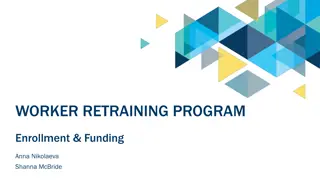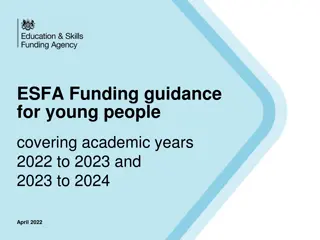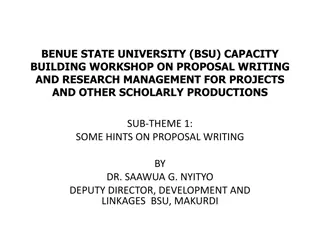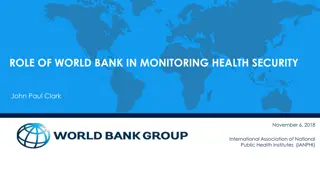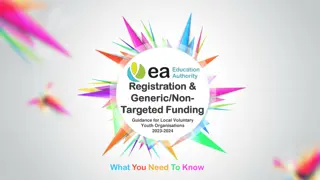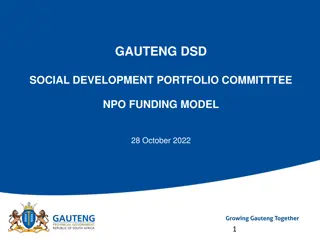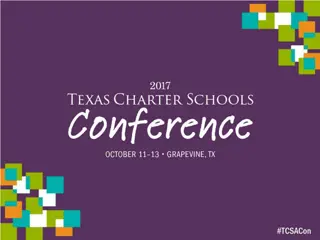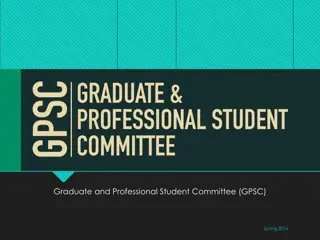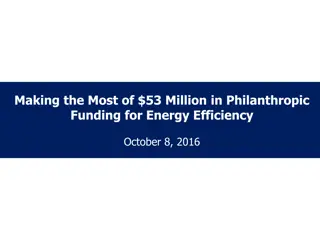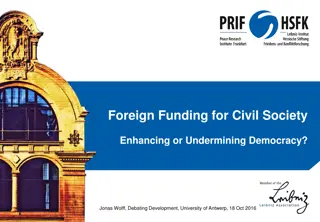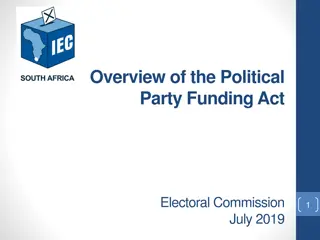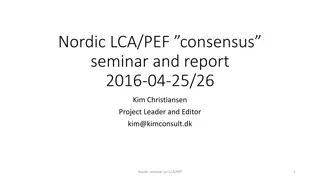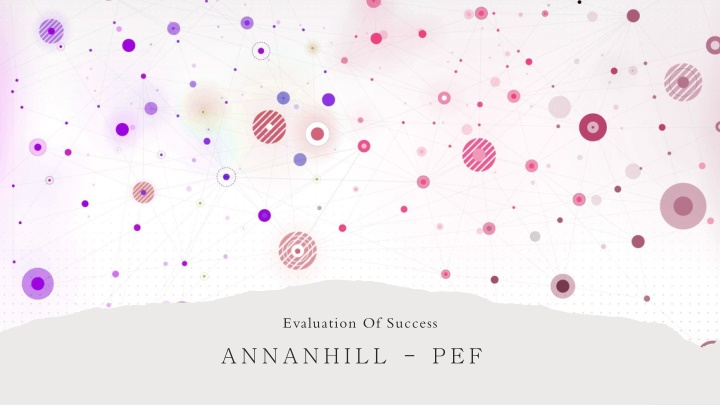
Supporting Health and Wellbeing in School: Strategies and Policies
Explore the success evaluation and aims of a school's PEF spend, focusing on supporting pupils' social, emotional, and mental wellbeing. Discover the impact of resources, technology, and staffing on enhancing learning environments and addressing diverse needs.
Download Presentation

Please find below an Image/Link to download the presentation.
The content on the website is provided AS IS for your information and personal use only. It may not be sold, licensed, or shared on other websites without obtaining consent from the author. If you encounter any issues during the download, it is possible that the publisher has removed the file from their server.
You are allowed to download the files provided on this website for personal or commercial use, subject to the condition that they are used lawfully. All files are the property of their respective owners.
The content on the website is provided AS IS for your information and personal use only. It may not be sold, licensed, or shared on other websites without obtaining consent from the author.
E N D
Presentation Transcript
Evaluation Of Success A N N A N H I L L - P E F
K E Y A I M S O F O U R P E F S P E N D Needs Analysis - Following the needs analysis of the school in February 2022, it was evident that across the school, pupils requiring further support were significantly linked to social, emotional and mental wellbeing, and were on the ASN log with health targets and Boxall Targets. Interventions using PEF Extension of nurture and inclusion environments to support the needs of more pupils across the school. Health and wellbeing attainment across the school to be explored through CLPL and training. Requirement of soft start and Breakfast for pupils within SIMD 1& 2 and Vulnerable Families. Staffing to support health and wellbeing interventions.
Policy national and local required to be explored in more detail... Scottish Government (2020)' Support for Learning: All our children and all their potential'. Morgan Report Policy linked to Health Policy linked to Health and Wellbeing... and Wellbeing... GTCS Standards Scottish Government (2021). Mental Health a Whole School Approach Framework for schools to support Children and Young Peoples Mental Health and Wellbeing , Edinburgh: Scottish Government. East Ayrshire Relationships Framework
2022 2022 - - 2023 2023 Evidence Resources Staffing CLPL Needs Analysis
R E S O U R C E S - I M PAC T Laptops/ Licenses Our primary 6 and 7 classes in the modular build are now fully supported with further laptops which allow for children to access a range of programmes and supports for their learning. Children within their ILPs and child plans are identified as needing this support and we are now able to cater for this more than previously. We have also introduced Nessy, to support children with dyslexia and literacy needs, as prior to this we had been looking at IDL for children, but this was showing no impact on learning and the children were reluctant to use it. Children are engaging well with this already and are carrying this out at home and school. Heinemann Active Maths has also been purchased to support learning in all classes, the resources allow for a more active approach to learning and support all learning needs. Furniture We have been able to adapt the nurture provision and extend beyond one room, this has allowed our infant pupils to access a play-based space. This has been targeted at 8 pupils who are now able to access their class more readily and has allowed them to start developing their relationships with peers. Prior to this, the pupils were very disengaged in their learning. Breakfast resources Pupils within SIMD 1 and 2, and within other vulnerable families have been supported in the mornings through soft starts and breakfast. We have also provided snacks throughout the day.
S TA F F I N G - I M PA C T DHT cover has allowed for a strategic approach to nurture and inclusion to be created. We have developed wellbeing across the school by building capacity in our team and supporting short term interventions and nurture. Class Teacher development of early intervention and supports at transition levels for resilience. CA empowerment to lead support and groups. This was extremely successful in the development of the Junior Duke Award.
Seasons for Growth S TA F F C L P L S TA F F C L P L - - I MPAC T I MPAC T LIAM training Through CLPL and the introduction of further staffing we have explored aspects of wellbeing through play, Junior Duke, and wellbeing support instead of being reactive and offering nurture provisions straight away. The impact of these supports have meant increased confidence, motivation and enthusiasm to access all aspects of their learning. Swimming Nurture Health and Wellbeing Support Furthermore, the introduction of an NME study has allowed staff to gain a deeper awareness of trauma informed practice which will be explored in session 2023-2024. NME Novel Study
Needs Anaylsis Feb 2022 Soft Start/End 11 children currently access a soft start, and this is working well. 1 additional child accesses this support, and it is not working. This child also requires a soft end, as do an additional 2 children. 0 children in total requiring a soft end. 49 out of 12 children requiring a soft start also require some form of nurture. June 2023 19 children currently access a soft start and this is working well. 3 May require this support in the future 1 requires this support now
Needs Analysis Feb 2022 1:1 CA (ASN) and 1:1 CA (SEBN) 4 children currently accessing and working well (ASN) 1 additional child requiring this support now (ASN) 3 children currently accessing and working well (SEBN) 1 additional child requiring this support now (SEBN) 9 children in total requiring 1:1 CA support. 1 child currently accesses this support, but it is not working (ASN). June 2023 1:1 CA (ASN) and 1:1 CA (SEBN) 1 child currently accessing and working well (ASN) 2 require this support now (ASN) 2 may require this in the future (ASN) 4 currently accessing and working well (SEBN) 4 may require this support in the future (SEBN) 7 children in total currently requiring 1:1 CA support 2 currently accessing and it s not working (SEBN)
Needs Analysis Feb 2022 Nurture (Full-Time and Part-Time) 0 children require full-time nurture now. 7 children currently access part-time nurture and it is working well. 2 additional children require part-time nurture. 19 children in may be requiring some form of nurture support in the future. June 2023 Nurture (Full-Time and Part-Time) 2 require full time nurture now 2 may require in the future 14 pupils currently accessing part-time nurture and it is working well 2 additional children require part-time nurture 6 pupils may be requiring some form of nurture support in the future 18 children require nurture support
D ATA A NA LYS I S D ATA A NA LYS I S S O W H AT ? S O W H AT ? We addressed meeting the needs of pupils through the following: We were able to support individuals across both the infants and upper stages of the school through part time nurture. This was developed through the success of last session. 9 pupils with significant learning needs linked to behaviour, learning, LAAC and social, emotional and mental wellbeing were supported from the upper school. The children were then able to successfully go to class in the afternoons to mix with their peers and participate in cross curricular activities. 5 pupils from the infant department were also supported on a smaller scale for health and wellbeing and this has had a positive impact on behaviours and ability to sustain longer periods of time in the classroom. Soft start and breakfast provisions have enabled pupils to start their day in a positive way making them ready to learn. Pupils can chat with key staff if required allowing for wellbeing check-ins to take place. This has allowed for support to be put in place straight away and pupils to feel supported as they have trusting and ley relationships with staff. The impact on the requirement of one to-one support has reduced and those requiring this support are also exploring small group supports to develop their wellbeing and social skills.
W H AT NE X T ? W H AT NE X T ? Targets Attendance Nurture Teacher to support Reduce the attendance gap within the groups of young people within SIMD 1&2, ASN and LAAC to within 1.5% of the school average. (Quantitative Data Target) Proactively engage with parents/carers with clear staged levels of support when attendance falls below 90% or sooner where previous attendance has been a concern in previous years. (Qualitative Data Target) Wellbeing Support - Classroom assistant allocation Staffing to support the delivery of short-term interventions. This will be linked to pupils within SIMD 1 & 2, and vulnerable families within the stages primary 3 - 6. Currently, our needs analysis from this session shows that 22 pupils require the Mini-Duke award which was successful for 17 pupils this session. All pupils completed the award and had a celebration at the end of the session. We will explore success through motivation and enthusiasm for learning across other aspects of the curriculum. A further two classroom assistants will engage in the authority Seasons for Growth session to support pupils who have suffered from change or loss.



